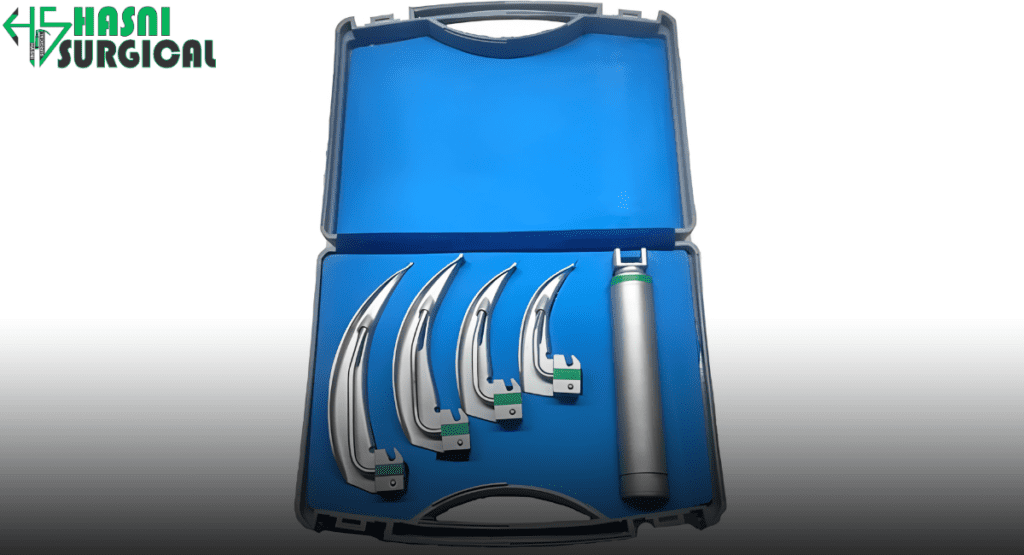Laryngoscope Advancements: Rehabilitation Impact
June 11, 2024 2024-11-21 7:12Laryngoscope Advancements: Rehabilitation Impact
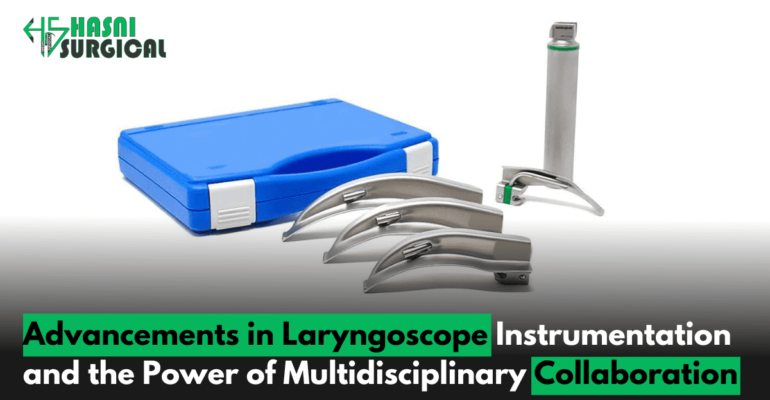
Laryngoscope Advancements: Rehabilitation Impact
Introduction:
Rehabilitation Impact
In the complex world of medical care, some tools are essential for healing and recovery in Hasni Surgical.
The evolution of laryngoscope instrumentation is a testament to the ingenuity and perseverance of medical innovators across centuries. From 19th-century basics to 21st-century wonders, laryngoscopes have transformed thanks to optical, illumination, and ergonomic advancements.
Yet, the significance of these advancements extends far beyond the confines of diagnostic accuracy and procedural efficacy. In rehabilitation medicine, laryngoscope instruments play a key role in restoring function and improving quality of life.
Also read: Advancements in Minimally Invasive Muscle Surgery Tools
Over the past two centuries, the laryngoscope has evolved in laryngology from basic instruments to advanced instruments, showcasing medical pioneers’ ingenuity.
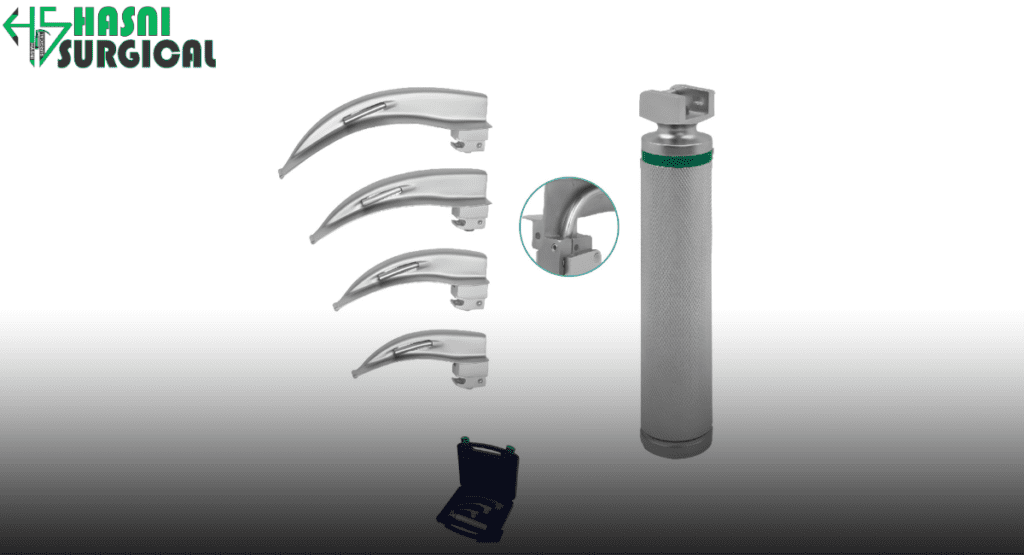
1. Early Developments:
In the 19th century, doctors invented the laryngoscope to diagnose voice issues, yet it offered limited visibility and poor illumination.
2. Gaslight and Electric Illumination:
The introduction of gaslights and electric illumination in the late 19th century marked a significant advancement in laryngoscope technology.
3. Fiberoptic laryngoscopes:
Fiberoptic laryngoscopes use optical fiber bundles for clear larynx visualization without rigid tools.
4. Video Laryngoscopy:
In recent decades, video laryngoscopy has emerged as a game-changer in laryngoscope instrumentation. This technology beats direct laryngoscopy with better visibility, operator comfort, and recording capabilities for learning and research.
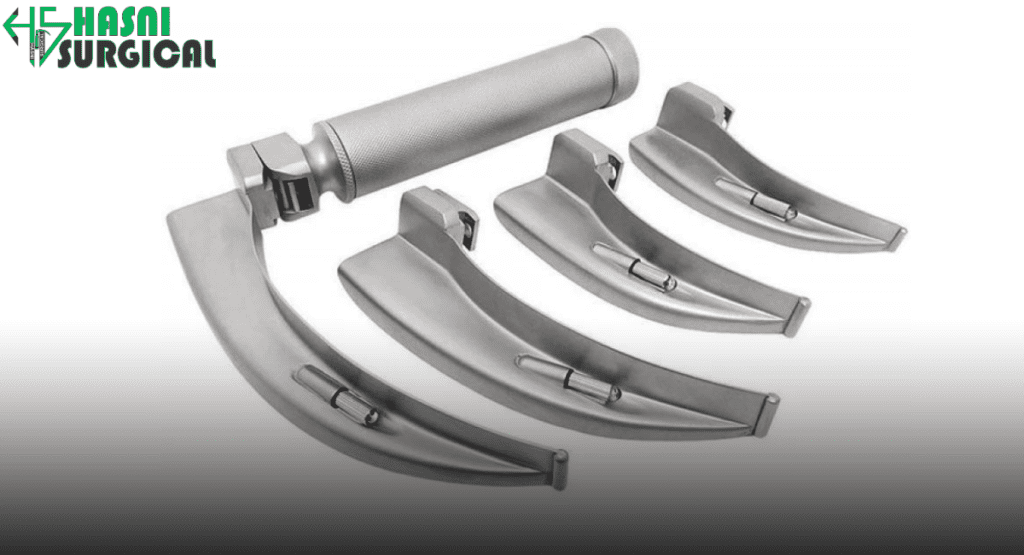
5. Miniaturization and Portability:
Advancements in miniaturization and portability have expanded the utility of laryngoscope instrumentation in clinical practice. These compact devices offer convenience, versatility, and ease of use, facilitating timely diagnosis and intervention for patients with laryngeal disorders.
6. Integration of Advanced Technologies:
The future of laryngoscope tools looks bright, with AI, VR, and AR integration on the horizon.
Future Directions:
New laryngoscope instrumentation advancements will revolutionize rehabilitation medicine, enhancing accuracy, effectiveness, and outcomes in laryngology and beyond.
1. Virtual Reality (VR) Integration:
Virtual reality (VR) has the potential to revolutionize laryngoscope training and simulation. Advanced VR platforms can recreate realistic anatomical structures and procedural scenarios, providing trainees with immersive learning experiences. Virtual laryngoscopy practice helps clinicians refine skills and overcome challenges risk-free. VR patient education boosts understanding and compliance with rehabilitation, empowering patients.
2. Artificial Intelligence (AI)-Assisted Diagnosis:
Artificial intelligence (AI) holds promise for revolutionizing laryngoscope-assisted diagnosis through image analysis and pattern recognition. AI can analyze laryngoscopic images and videos, spotting abnormalities and guiding clinicians in treatment decisions. By leveraging AI-driven diagnostic tools, clinicians can expedite the diagnostic process, improve accuracy, and facilitate personalized treatment planning. AI decision support systems can aid clinicians in interpreting findings, optimizing therapies, and predicting outcomes.
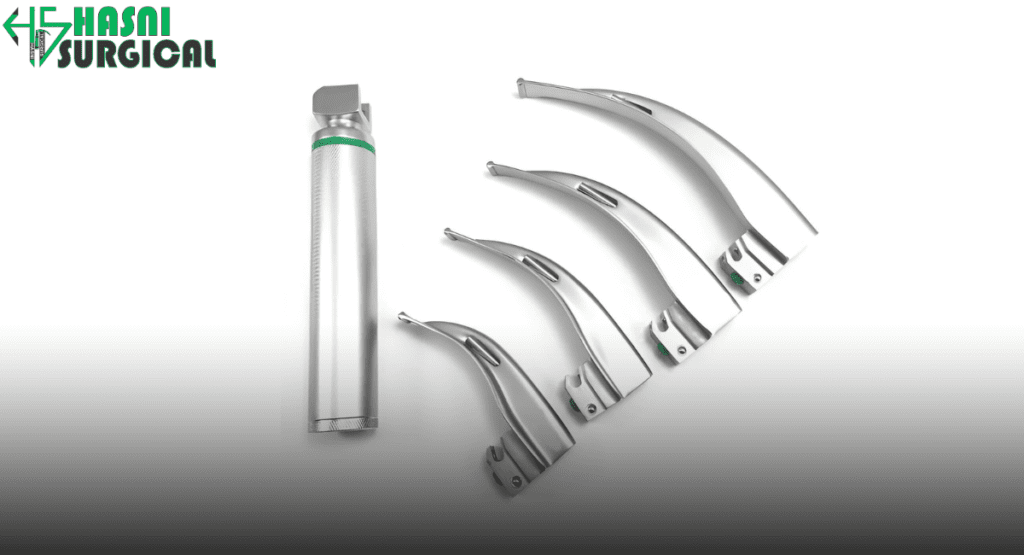
3. Telemedicine and Remote Monitoring:
Telemedicine with advanced laryngoscopes improves healthcare access by transmitting high-quality visuals and data remotely, which is crucial in crises and underserved areas.
4. Precision Medicine and Personalized Therapeutics:
Precision medicine customizes treatments based on individual traits like genetics, physiology, and lifestyle. In laryngology, it personalizes treatments for improved voice, swallowing, and quality of life.
Conclusion:
The future of laryngoscope instrumentation is characterized by innovation, integration, and collaboration across disciplines. Laryngology adopts VR, AI, telemedicine, and precision medicine to improve voice and swallowing care, enhancing quality of life.
Clinicians can now use advanced tools to improve treatments for throat issues, boosting quality of life.
The synergy between laryngoscopy and rehabilitation medicine extends beyond diagnosis and treatment; it encompasses a holistic approach to patient care.
The future holds great promise, with VR, AI, and telemedicine revolutionizing rehabilitation medicine.
